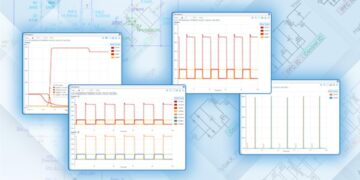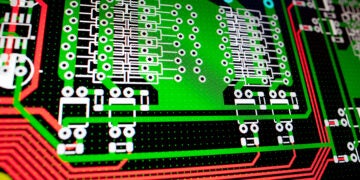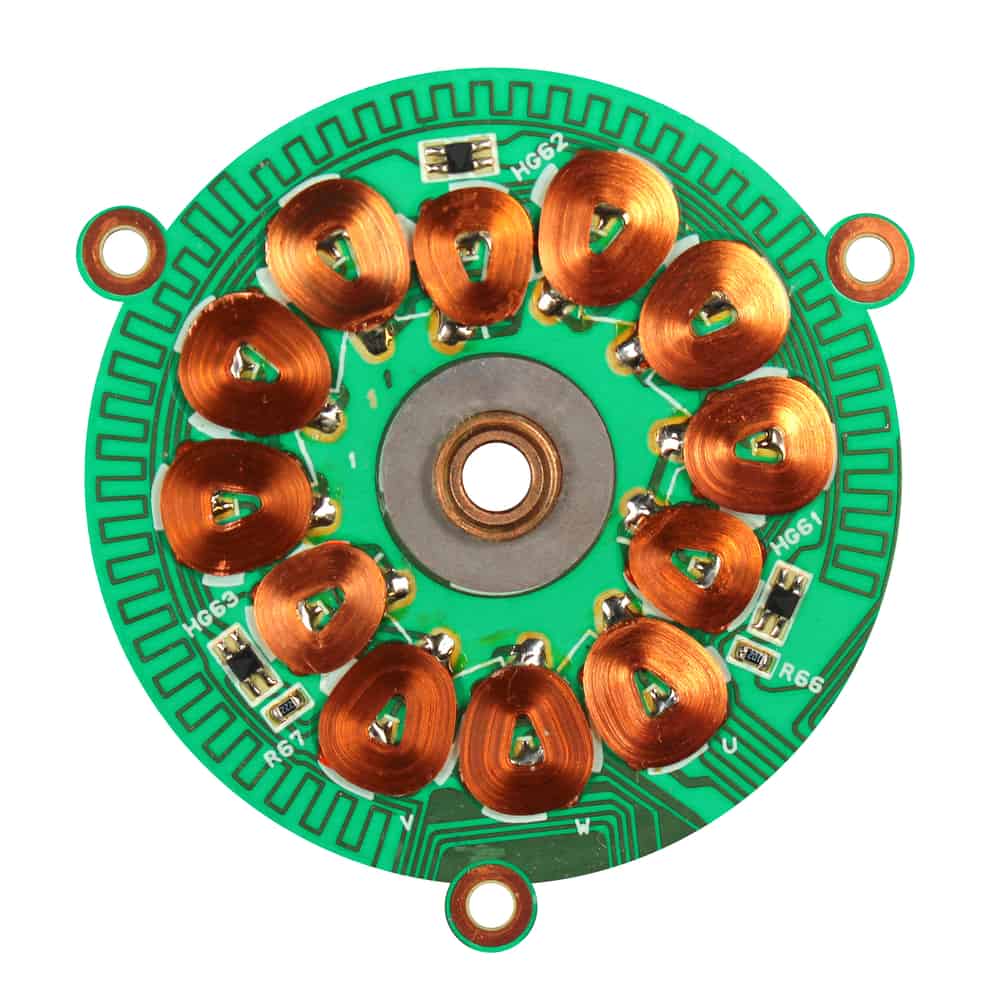
A brushless DC motor
Today, we have appliances capable of performing physically taxing tasks not only better and faster than we can but also designed to be sensitive to our presence. Robotic vacuums are just one of these amazing devices that exhibit this ambient intelligence (AmI).
However, such improvements to our quality of life depend on the continual advancement of the technology that drives them. And for many of these products, that means better brushless DC motor drivers, such as the MCF8316A and MCT8316A from Texas Instruments.
Brushless DC Motor Uses and Applications
Electric motors are essential for virtually all products that require motion. Although several options are available, such as induction motors, servo motors, and brushed DC motors, brushless DC motors or BLDCs have become the preferential choice, especially for household products and appliances, due to their many favorable attributes.
Attributes of BLDC Motors
- High efficiency
- Long operational lifecycle
- High speed
- Noiseless operation
- Better speed vs. torque characteristic (as compared to brushed DC motors)
The range of uses for which BLDC motors may be employed is extensive and includes the following:
BLDC Applications
- Household appliances
- Consumer electronics
- Industrial equipment
- HVAC
- Automotive systems
- Medical devices
Induction and brushed commutation DC machines are capable of constant speed operation without external control. However, for smart machines where variable speed is required, a controller is needed. BLDCs deliver more efficient, quieter, and longer service than these alternatives.
Conventional BLDC Control
The most crucial motor characteristics for motor control are torque (𝜏) and speed (𝜔), which determine the output power (Pm), according to Eq. 1 and shown in the image below.
Pm = 𝜏𝜔 (1)
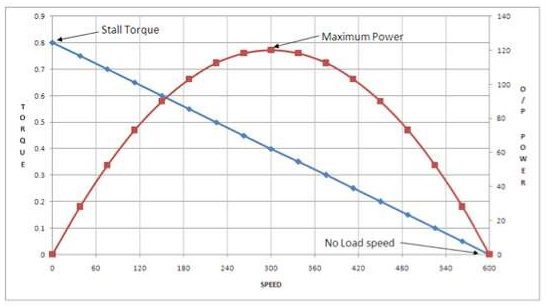
BLDC operational characteristics
Depending upon the application of the BLDC, torque, speed, and protection may be the priority for the driver. In either case, sensors provide the motor status, generating control signals to adjust the motor’s speed, position and/or torque by changing the input voltage and current. Examples of the relationship between the field and Hall sensors for a 3ϕ BLDC motor are shown below.
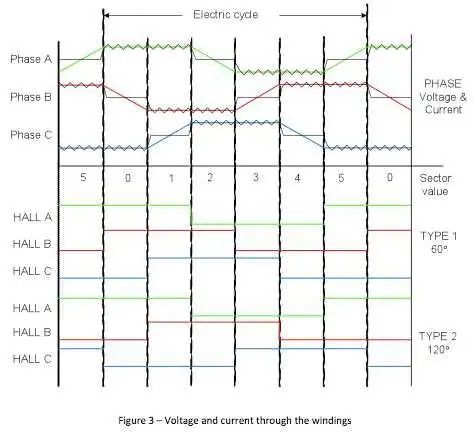
BLDC control field voltage and current examples
The control model above has been successful and contributory to lowering the costs and increasing the usage of BLDC motors; however, the landscape is expanding, emphasizing attributes like increased power, quieter operation, and smaller size demand more advanced control.
Raising the Bar for Brushless DC Motor Drivers
Fortunately, new controllers have been developed by Texas Instruments (TI) that not only successfully address the use of BLDC motors for more demanding applications but also improve the development cycle to get your product to market. Two of these are the MCF8316A and MCT8316A brushless DC motor drivers, shown below.
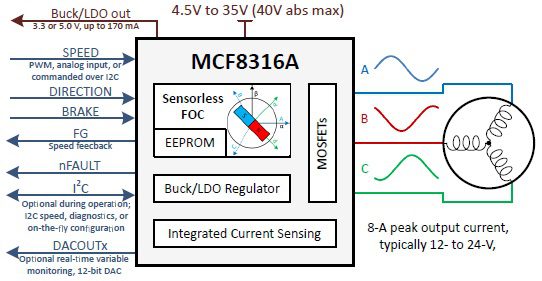
TI MCF8316a BLDC motor driver overview
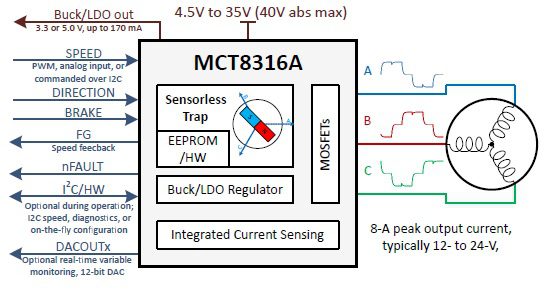
Overview of TI MCT8316a BLDC motor driver
The MCF8316A and MCT8316A are members of TI’s family of 70W control sensorless BLDC drivers. The MCF8316A is a sensorless field oriented control BLDC driver while the MCT8316A is a sensorless trapezoidal control BLDC driver. These next-generation controllers sever the dependence on Hall sensors, which reduces complexity and HW requirements associated with conventional controller design.
Additionally, these sensorless integrated control drivers can be implemented with a compact PCB layout that promotes utilization in small devices. Another important advancement, as quiet operation is a preferred attribute—a primary requirement for devices, such as appliances where the best AmI experience is an objective— is vastly improved acoustical performance over conventional alternatives.
These drivers can also be implemented in sensitive applications where BLDC failure may present motor damage and/or safety concerns. Both controllers have over-temperature shutdown, overvoltage and undervoltage lockout, power supply lockout, and charge-pump undervoltage lockout that provides automatic protection. In addition, fault information is stored and accessible from internal registers.
How to Advance Your Next BLDC Motor Driver Design
In addition to improving operation and supporting the trend toward widening usage of BLDCs, TI’s new drivers, the MCF8316A and MCT8316A, are also intended to improve your product development by mitigating the more tedious and time-consuming activities. This allows for an optimized design process.
BLDC Motor Driver Design Optimization
- Go sensorless
Sensorless FOC and trapezoidal control eliminates the component, size, and time costs associated with using Hall sensors.
- Minimize the form factor
The drivers are available in a 5mm x 7mm 40-pin package that can save you up to 70% in board space.
- Eliminate programming requirements
TI’s advanced drivers offer a code-free BLDC motor control solution that helps reduce bring up time.
- Speed up motor tuning time
TI’s MCF8316A and MCT8316A drivers do not require microprocessors—which are typical for motor control boards—therefore, no coding is required. Instead, control is implemented through register settings, and motors can be tuned in minutes.
The MCF8316A and MCT8316A from TI take BLDC design, operation, and application possibilities to a new level. For more detailed information on these advanced brushless DC motor drivers, see MCF8316A datasheet and MCT8316A datasheet.
If you’re looking for CAD models for common components or information on new advanced parts like the TI MCF8316A and MCT8316A brushless DC motor drivers, Ultra Librarian helps by compiling all your sourcing and CAD information in one place.
Working with Ultra Librarian sets up your team for success to ensure streamlined and error-free design, production, and sourcing. Register today for free.


